Ultimate Guide to All Electric Vehicles
The world is going all-electric, haven’t you noticed?
From solar panels being on tens of millions of homes in America, to Germany’s plan to be 100% green by 2050, to solar mirror towers being erected everywhere – the world is getting away from dangerous fossil fuels, and converting to electricity for everything, which can be harvested through renewable sources.
But where does that leave transportation?
It leaves us right in the middle of a revolution. How we get around, how we come together, and the impact on the environment that follows.
After all, it’s not like the population is slowing in growth, you know?
Billions of cars on the road at the same time will be an environmental disaster, and we’re at the forefront, steering it along.
For commuting and long-distance electric vehicles, all their little quirks and picadillos, we’ve made you this guide—it’s time to hop on board with future transit, starting right now.
If you’d like to see a graphical breakdown of the electric vehicles types, we got you covered:

Share this Image On Your Site
Why Are Electric Vehicles Booming Right Now?

People have become more conscious of the environment, even people who previously denied that we were doing anything wrong and hurting mother earth.
However, the insurmountable evidence is clear and overwhelming: we’re destroying the planet at an accelerated rate, which is pretty terrifying.
People care. Even when they don’t seem like it, more people care than those who don’t.
We live in a world where a lot of US/Western influence affects global marketing trends, and whether it was a trendy little stint of time or not, the green movement in the United States has influenced the rest of the world.
The science is out. Activists and children are speaking out against the future of the planet. People are stirring the pot.
One of the biggest issues we have is gas consumption, and this is a global problem.
During the 2020 quarantine, we saw what just a few months of less (not zero, but less) vehicles on the road did to our satellite images of the atmosphere, and even smog over cities that haven’t had clear skies in a century.
That’s powerful, isn’t it? Now imagine if we could do that all the time.
Imagine if the population continued to boom, but we didn’t destroy the planet as a result. If we could still grow in sync with nature, to the best of our abilities.
Electric vehicles promote hope for a cleaner future, and now that they’ve been around for a while, their efficiency is a totally different story from the dawn of the first consumer-available electric car.
The Battery Revolution

We had an oil crisis in 1970. Fifty years seems like a long time ago, but in the grand scheme of things, it’s really not.
During this time, we needed something to replace fossil fuels, and the world saw just how fragile and dependent we all were because of fossil fuel reliance.
Everyone wanted a change. Of course, the oil crisis came to an amicable point, and many people stopped the fight, but it sparked a battery revolution, as we like to say.
It sparked a generation of people, who inspired others and the following generation, to look at renewable energy sources for more than just economic purposes.
It wasn’t just about running out of fuel, but rather the impact that burning fuel has on the environment, and using that as a talking point.
Every year, more scientific reports from both government-funded and independently-run laboratories come to light with a similar theme—we’re messing up the world, and there are ways we can fix it if we act quickly.
Lithium-ion and lead acid batteries are replacing just about everything you see.
There are less and less gas stoves and furnaces across the country, newer homes are built with entirely electric-centric heating and cooling systems, and the world has gone to rechargeable batteries instead of disposable.
We want cleaner skies. We want cleaner water. It’s all coming together as we abolish dirty forms of energy with the march of time.
The battery revolution didn’t happen in 1970: it started in 1970, and it’s still going on today.
How Much Do They Cost Compared To Normal Vehicles?

Tesla is the largest manufacturer of electric cars, as most of us know.
If you want a new Model 3, which was their current model at the time of writing this article, it’s going to run you around $41,000 before you mess with the options for add-ons and what not.
Compare that to the new Toyota Camry, which runs at just under $24,500, and the difference is a bit staggering.
But the thing is, gasoline engines continually need high levels of maintenance and to be cleaned to clear out all that carbon mess in the engines.
While a Tesla runs clean, it also doesn’t damage the components outside of the wear and tear of just driving. It’s more efficient for your wallet, hands down.
Recently before writing this guide, Tesla became the world’s most valuable carmaker out there, surpassing the giant, Toyota, right out of Japan.
It’s not just because Tesla makes good cars, it’s because they’re going full-sail in the direction of the future. Going with the tide and trends instead of against them.
We want clean energy, Tesla is delivering.
When you look at the amount of vehicles that Tesla outputs compared to Toyota, or even the time since they’ve been founded versus Toyota, they seem like the underdog.
They seem like they shouldn’t be where they are today. The sales and stocks speak for themselves: we put greater value in electric cars than gas guzzlers.
Types Of Electric Vehicles
It’s not just Model 3’s and Volkswagen cars that are running on electricity—there are so many ways to get around.
While you might not find all of these options viable if you live fairly far away from work, you can commute with these unique vehicles in closer city-like areas with great effectiveness.
Electric Cars
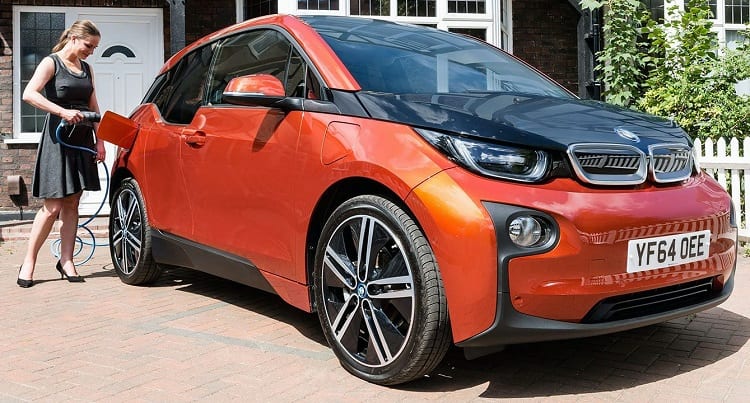
By far, the most innovative and fantastic use of electricity in vehicles.
Electric cars have taken the world by storm so much that Tesla is now the most-valued carmaker on a global scale.
Just imagine that for a second, that places like Ford, who have been in business since 1903, are now second fiddle to a company that was founded one-hundred years later in 2003.
Electric cars are expanding into electric semi trucks to transport goods across the country, as well as electric trucks such as Tesla’ Cybertruck for public use.
With electric cars comes the dawn of self-driving vehicles as well, which is another beast we’ll tame at another time.
Electric Bikes
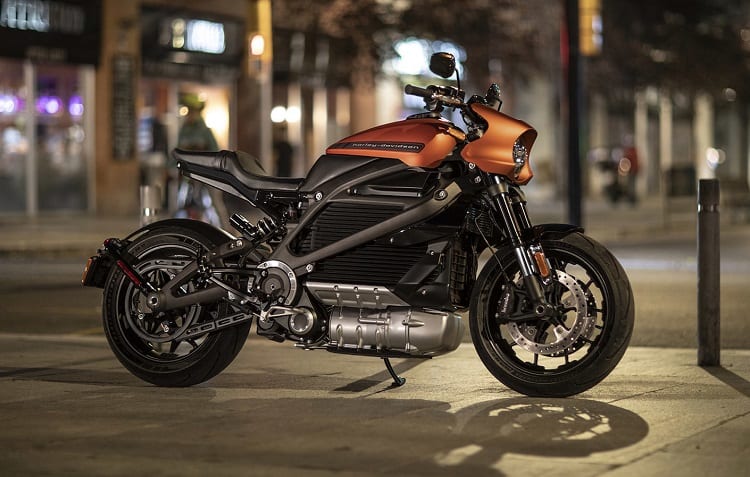
Yes, electric motorcycles are becoming mainstream. Even the big dog Harley-Davidson has made some (rather expensive) electric motorcycles.
You can find mixes of these for around the $10K mark, but there are some online for about $2,500 that have… questionable quality.
Electric motorcycles aren’t an entirely new concept, but now the biggest players in the game are putting in serious effort to produce them to meet the market need.
Basically, you’re going to see a huge drop in prices in electric bikes over the next few years, and if you’re a motorcycle fan, that’s good news for you.
Electric motorcycles can exceed speeds of 102 MPH, which is pretty bananas when you really think about it.
These are just motorcycles with an electric energy source, but behave very similarly to gas-burning motorcycles that we’ve all come to know and love.
Electric Bicycles

Bicycles with motors. You know, the vehicle variation that people told you was too dangerou in the early 2000s.
Now it’s a staple in citywide travel, and for good reasons: it can hit high speeds and get you to work fast, without polluting the air.
These are going to be driven on the road, where you will be expected to follow all traffic laws and regulations. Just pretend you’re on a motorcycle since they have the same rules of the road to follow.
A good electric bicycle will have turn signals and a headlight, a housing for the motor to prevent it from getting wet in rainstorms, but very little other provisions.
While they’ve come a long way, they’re not going to do all the heavy lifting for you. These come in handy up to about 25 MPH and for roughly 20 miles on a single charge.
Electric Scooters

Electric scooters tend to be marketed as a child’s toy, but it’s actually possible to have medium-range electric scooters that work great for inner-city travel and commuting.
Electric scooters fall in between the weird spot of being legal on the sidewalk, and not being legal on the sidewalk. Hopefully, your city has some bicycle lanes that you can utilize.
Many electric scooters don’t peak over about 15 MPH, which is why they fall in that gray area for commuting.
It’s not the first choice for most commuters, but it can be used in place of walking the average 3 MPH.
Hey, you have to get to work somehow, right?
Electric scooters are wildly inexpensive, with some even being about $100, so for someone with a minimum wage job that can’t keep hemorrhaging money on public transportation, this is a solid option.
Electric Skateboards

Another fun, primarily commuter-ready mode of electric transportation is the electric skateboard.
It’s just what you’d expect—a skateboard with a motor. The only thing is, these don’t give you an ample amount of power; they’re more like push assistance.
When you push off, you can enact the motor to help bring you up to speed, which is between 3 and 5 MPH.
The motor works to keep you cruising at your preferred speeds, so you can just focus on the path ahead without having to push off of the ground.
It helps to not be sweaty when you get to work, which is a problem with anyone taking skateboards or bicycles to work most of the time.
This push assistance is one of the greatest parts about electric skateboards, but you do have to beware the total amount of clearance from the bottom of the battery (generally located on the bottom of the board).
Be cautious when going off of sidewalks or near uneven roads.
Electric Unicycles

Never thought you’d see the day, huh?
Electric unicycles sound ridiculous, but in application, they’re really quite fascinating.
Because of the unique way the motors are designed and implemented, an electric unicycle can go extremely fast.
Electric unicycles tend to come with a maximum user weight of around 240 lbs for most models, and cost more than electric skateboards or scooters by a fair amount.
You can still find some of these in the upper three-figure range.
For the most part, you get about forty minutes to one hour of use on a single charge for the average electric unicycle.
This is going to vary depending on which model you choose and how you go about it. It’s enough for commuting, and when I mentioned speeds earlier, I meant it.
The average electric unicycle speed starts low at 22 MPH, but some can go up to 30 MPH, which when you think about it, is a pretty fast little device.
These wheels touch the ground with you either sitting on a seat, or bending your knees to adjust your center of gravity on two foldable pedals on either side.
They’re not just good for commuting; they’re tons of fun.
Battery Sizes And Charge Times

Batteries come in different sizes, depending on what they’re going into.
We can find lithium-ion in electric vehicles as well as commuting vehicles such as skateboards, so it’s not really the type that we want to look at. It’s the kw, KWh usage, and wh storage.
Every device is going to be different. Manufacturers will make their own batteries when available, so it’s not possible to perfectly pinpoint the sizes of different batteries.
Instead, pay attention to those attributes we mentioned earlier.
- KWh: Kilowatt hours define how much energy is used, in the form of kilowatts, every single hour of continuous operation.
- KW: Kilowatts define how many kilowatts are used to operate the device in question.
- WH Storage: Total amount of watt hours that can be stored in a battery. Important for longevity and to know how long a charge will take.
Costs Of Electric Vehicles
Let’s just run down a quick list of some of the average prices you can expect to find on the vehicles we just mentioned, just so we can get familiar with what we’re expected to supply in this space.
- Tesla Model 3: $41,000
- Electric Motorcycle: $10,499.99
- Teamgee Electric Skateboard: $399.99
- Solowheel Xtreme Electric Unicycle: $999.99
- Ancheer Electric Mountain Bike: $599.99
- XPRIT Electric Scooter: $279.95
These are averages, and not to be taken as extremely affixed prices.
For example, some electric motorcycles can be purchased online for $2,500, while some electric cars from Tesla can peak over $100,000.
You can even pay less than $100 for an electric scooter if you really wanted to.
Fuel vs. Upfront Costs
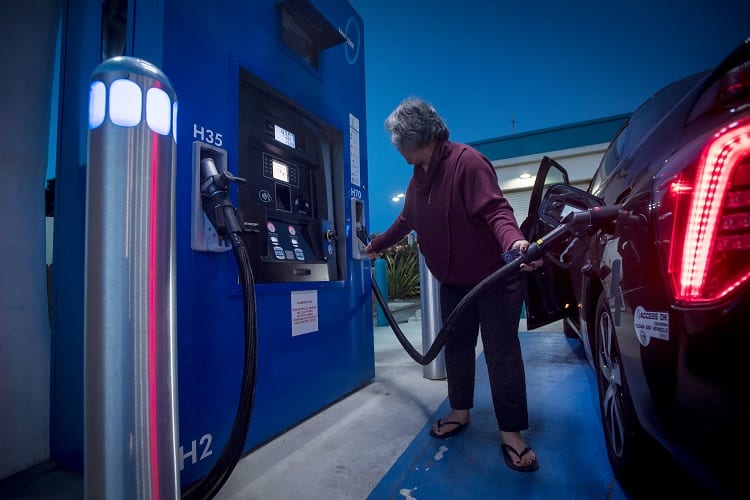
Since electric vehicles cost different amounts and require different KW hours, we’re going to take a look at this on a broad spectrum.
On average, to fill up a gas tank that gives you about 250 miles worth of distance (think of an older Camry or Civic, for example), that’s going to cost you an average of $2.70 per gallon.
Let’s say that you need 12 gallons of gas. That’s $32.40 for a full tank, or at least 250 miles worth of distance. That’s also 25MPG, which isn’t too shabby.
Now consider a Tesla Model 3. For 250 miles of range, it’s around $22.00 for a full charge from a Tesla supercharger.
That’s an average savings of $10.40 every single week, or $540.80 per year.
Even if you stack up the savings on a ten-year basis, that $5,408.00 isn’t enough to close the gap between the cost of a new Tesla versus a new Camry, for example.
But it’s not just about fuel. Yes, there are long-term fuel savings, but the cost of repairing a Model 3 is different than the cost of maintaining a gas engine.
In fact, you might end up saving an additional $9,000 over a ten-year period, since the average American typically needs about $900 per year for car maintenance.
That puts your savings up to a rough $14,000, plus saving all the time associated with repairs.
The biggest comparison is with full-sized vehicles, but even if you use an electric skateboard or unicycle to get to and from work, you’re still going to save money compared to taking the bus.
If you have to get five miles from your home to work and then back, that’s about two days worth of power on a standard electric skateboard.
Charging that at home may cost you about $1.00 depending on your variable energy rates.
That’s four bus fares, which average about $6.00 in total.
Even if you just work four days a week, that’s a total of $8.00 in clean-burning electricity every month, compared to $24.00 on the bus (which you have to wait for, by the way) that also sends chemicals into the air.
Everywhere you look, electricity is cheaper than gas. It’s better for the environment. It’s overall a better idea.
The only major costs you need to consider for smaller commuting vehicles, like electric bikes and unicycles, is the cost of replacing your lithium-ion battery every three to five years.
This isn’t overly expensive especially when you look at what you’ve saved in the meantime, though.
Chinese vs. US Electrics Vehicles
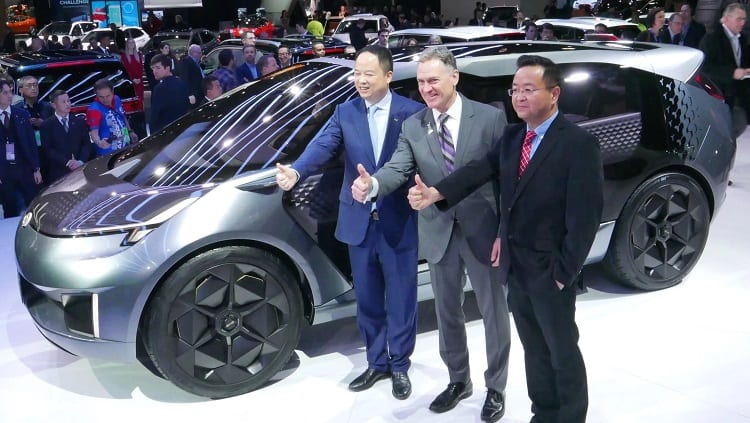
In China, they’re absolutely smoking us on production of electric cars.
Compared to about 900,000 electric cars produced in the United States on an annual basis, China is producing about 2.36 million, which is a huge jump up.
Chinese motors, as well as most Chinese wares, are cheaper than American wares.
This doesn’t mean they’re inherently bad or anything like that, it just means that they may be made with lower quality parts or with cheaper labor. You know the motto: you get what you pay for.
In truth, there are some viable Chinese electric motors out there, but they’re few and far between compared to the shorter list of manufacturers that produce high-quality electric cars here in the United States.
However, we have to look at the fact that some of the biggest brands out there, like Volkswagen, will be manufacturing their vehicles in China, so there’s that to consider.
What The Future Holds
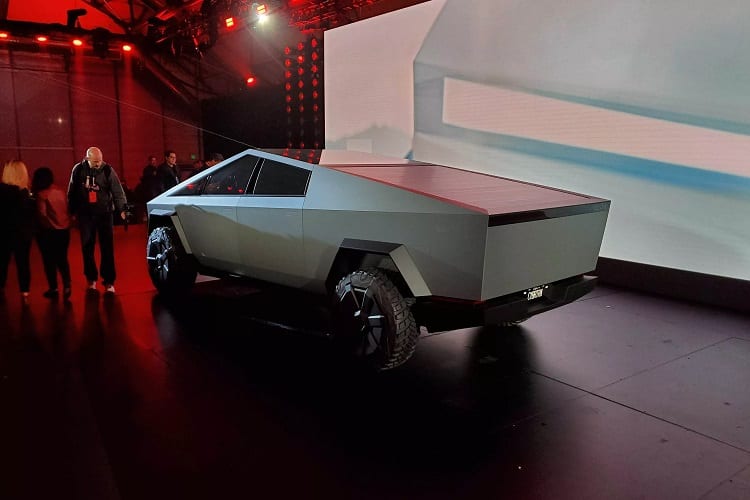
Electric cars with 500M+ ranges. Fully electric trains that don’t require third rails.
Self-driving, self-charging fully electric semis. Eventually, electric planes in mass production (in 2016 there was a full global circumnavigation with nothing but solar power).
The future is hot on our heels.
While we’re not riding on hoverboards that Marty McFly promised us, we’re making insane advancements that just need to hit a commercially sustainable, economically-priced point for most of the nations of the world.
Our World Runs On Electricity
How can you not expect to see electric vehicles absolutely dominating the roads out there?
It’s inevitable, and it’s for the better.
When we look at our negative impact on the planet, then we look at the 2020 quarantine positive impact on the planet by taking millions of cars off the road for a few months, it’s startling.
We’re killing the planet every single day, and at the same time, funding these insane corporations that do so many other bad things for the environment (and economy), all so that the rich keep getting richer.
Going electric, especially if you course it yourself, is a way to cut ties with the financial blight of fossil fuels, and cut down on your carbon footprint in the process.

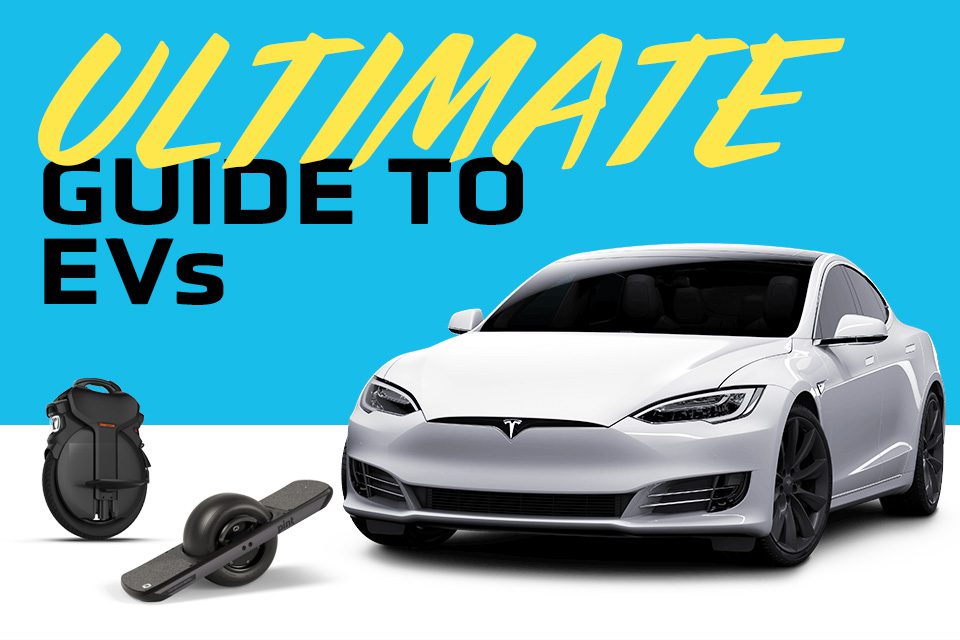






2 Comments